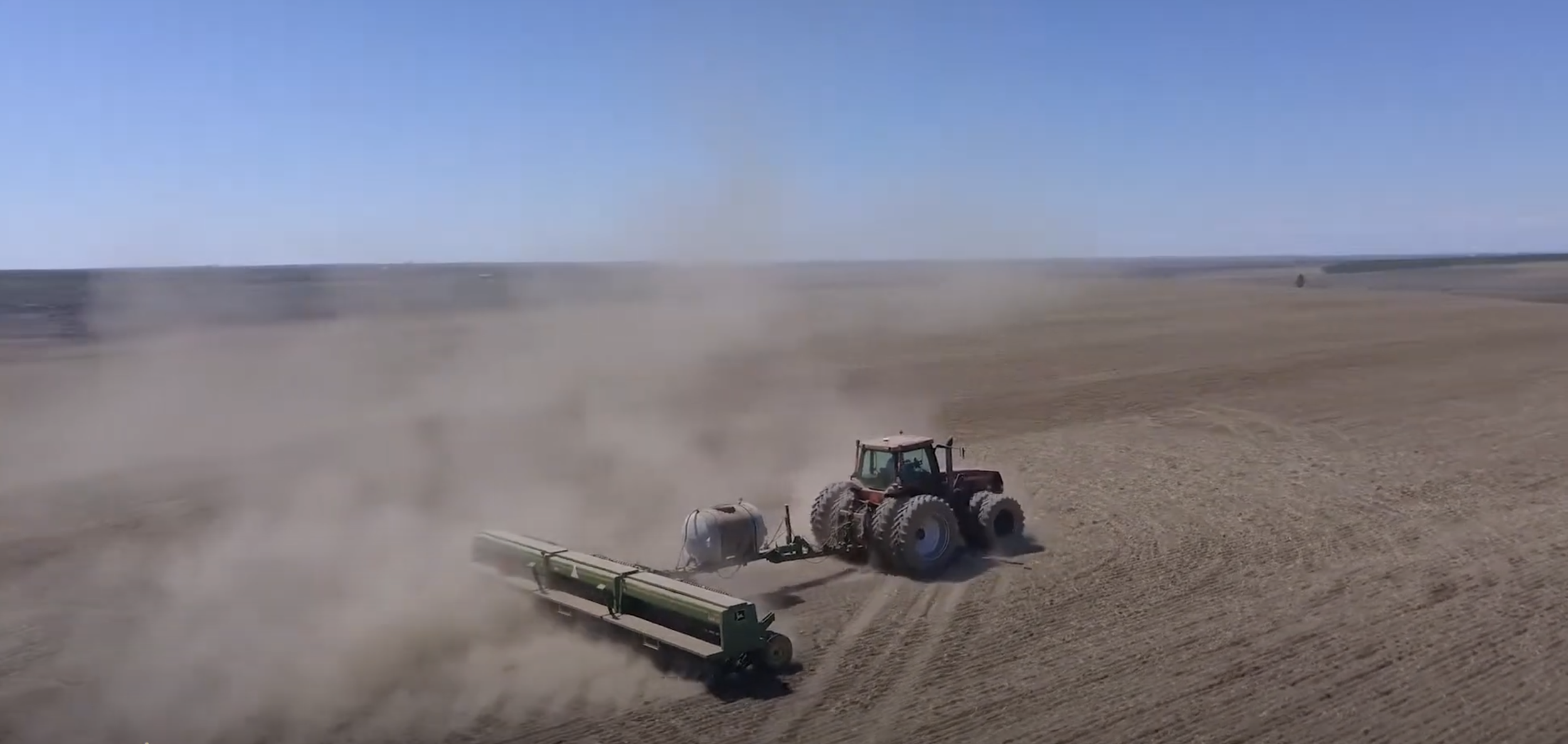Washington’s wheat farmers follow a year-round cycle rooted in tradition, innovation, and stewardship. From preparing the soil and planting to protecting the crop and bringing in the harvest, each step is managed with care. The result is high-quality wheat that not only supports local communities but also feeds people around the world.
Step 1: SEEDING
Before wheat seeds go into the ground, farmers must prepare the seedbed. Conventional farmers lightly till the top few inches of soil using cultivators and harrows. This process helps incorporate organic matter, loosen the soil, and create ideal conditions for strong seed-to-soil contact.
Farmers who follow no-till or minimum-till practices skip tillage altogether, relying instead on crop protection products to manage weeds and pests. These methods allow them to seed directly into the residue from the previous crop, helping preserve soil structure and moisture.
No matter the method, today’s seeding process is guided by advanced technology. GPS systems steer tractors and sprayers with precision. Seed monitors track planting rates down to the seed. Variable-rate fertilizer application ensures nutrients are applied exactly where they’re needed—saving resources and protecting the land.
Using a drill, the farmer opens the soil, places the seed and fertilizer into the moisture zone, and packs it in for optimal germination. With a little help from Mother Nature, the seed sprouts and begins its journey toward harvest.
Step 2: Crop Protection
Once wheat emerges from the soil, it faces threats from weeds, insects, and disease—much like a yard full of dandelions. To protect their crop, farmers closely monitor their fields and apply crop protection products only when needed.
Using tools like herbicides for weeds, insecticides for pests, and fungicides for disease, farmers target specific problems to keep their wheat healthy. All of these products are approved by the EPA and USDA, and are used responsibly and precisely. They're costly, so farmers apply only what's necessary—never more—ensuring both crop health and environmental care.
Step 3: Harvest
When the wheat has fully headed out, turned golden, and dried down to around 10–12% moisture, it’s ready for harvest. Using modern combines, farmers cut the wheat and separate the kernels from the stalk and chaff in one smooth process.
The clean grain is then loaded into trucks and hauled to local elevators for storage. From there, it’s transported by rail, truck, or barge to domestic mills or export terminals—on its way to becoming food for families around the world.
How a Combine Works
Step 4: Wheat Worldwide
Washington farmers primarily grow Soft White Wheat, a versatile variety prized for making pastries, cookies, noodles, and other delicate baked goods. Known for its low protein and excellent milling quality, it’s exactly the kind of wheat international markets demand.
Once harvested, much of Washington’s wheat begins its journey to the world. Transported by rail, truck, and barge, it makes its way to export terminals along the Columbia River and Puget Sound. From there, it’s loaded onto cargo ships and delivered to customers—primarily in Asia—who rely on Washington wheat for quality, consistency, and performance in their products.
Our wheat may start in rural fields, but it ends up in kitchens and bakeries around the globe.











